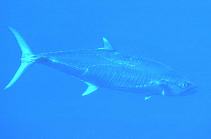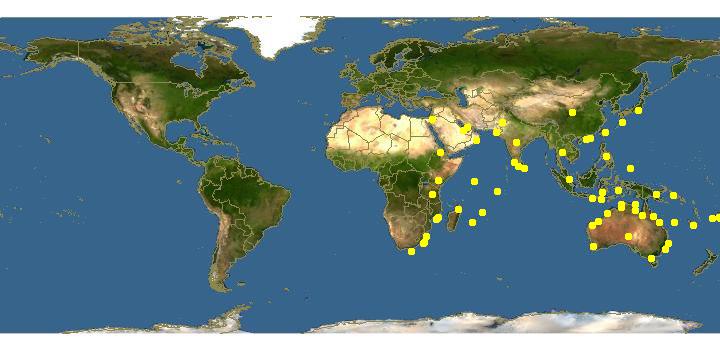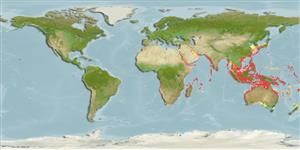http://www.fishbase.org/Summary/speciesSummary.php?genusname=Scomberomorus&speciesname=commerson ---> http://52.67.158.155/Summary/speciesSummary.php?genusname=Scomberomorus&speciesname=commerson
http://52.67.158.155/Summary/speciesSummary.php?genusname=Scomberomorus&speciesname=commerson ---> https://fishbase.net.br/Summary/speciesSummary.php?genusname=Scomberomorus&speciesname=commerson
https://fishbase.net.br/Summary/speciesSummary.php?genusname=Scomberomorus&speciesname=commerson ---> https://fishbase.net.br/summary/Scomberomorus-commerson.html
Scomberomorus commerson, Narrow-barred Spanish mackerel : fisheries, gamefish

You can
sponsor
this page
Common name (e.g. trout)
Genus + Species (e.g. Gadus morhua)
-

-
About this page
-
Languages
-
User feedbacks
-
Citation
-
Uploads
-
Related species
-


 Narrow-barred Spanish mackerel
Add your observation in
Fish Watcher
Upload your
photos
and
videos
Narrow-barred Spanish mackerel
Add your observation in
Fish Watcher
Upload your
photos
and
videos
Pictures
|
Videos |
Stamps, Coins Misc.
|
Google image
 Scomberomorus commerson
Scomberomorus commerson
Picture by
Patzner, R.
Teleostei (teleosts) >
Scombriformes
(Mackerels) >
Scombridae
(Mackerels, tunas, bonitos) > Scombrinae
Etymology:
Scomberomorus:
Latin, scomber = mackerel + Greek, moros = silly, stupid (Ref.
45335
)
.
More on author:
Lacepède
.
Environment: milieu / climate zone / depth range / distribution range
Ecology
Marine; pelagic-neritic; oceanodromous (Ref.
51243
); depth range 10 - 70 m (Ref.
12260
). Tropical; 39°N - 41°S, 7°W - 170°W (Ref.
54880
)
Indo-West Pacific: Red Sea and South Africa to Southeast Asia, north to China and Japan and south to southeast Australia, and to Fiji (Ref.
6390
). Immigrant to the eastern Mediterranean Sea by way of the Suez Canal. Southeast Atlantic: St. Helena.
Length at first maturity / Size / Weight / Age
Maturity: L
m
75.2
, range 55 - 82 cm
Max length : 240 cm FL male/unsexed; (Ref.
5765
); common length : 120 cm TL male/unsexed; (Ref.
5450
); max. published weight: 70.0 kg (Ref.
5765
); max. reported age: 22 years (Ref.
50580
)
Dorsal
spines
(total): 15 - 18;
Dorsal
soft rays
(total): 15-20;
Anal
spines
: 0;
Anal
soft rays
: 16 - 21;
Vertebrae
: 42 - 46. This species is distinguished by the following characters: body elongate (depth 4.8-5.6 in SL), moderately strongly compressed; upper jaw reaching to posterior margin of eye or slightly beyond; teeth in jaws strong and compressed; gill rakers of first gill arch 0-2 on upper limb and 1-8 on lower limb, total 1-8; 2 dorsal fins, D1 XV-XVIII and D2 15-20, followed by 8-11 finlets; anal fin originating below midpoint of second dorsal fin, with 16-21 soft rays, followed by 7-12 finlets; lateral line abruptly bent downward below end of second dorsal fin. Colour of back iridescent blue-grey, sides silver with bluish reflections, marked with numerous thin, wavy vertical bands; number of bars increases from as few as 20 in a 40 cm specimen to as many as 65 at 150 cm; juveniles frequently spotted (Ref.
9684
,
90102
).
A pelagic fish, inhabiting near edge of continental shelf to shallow coastal waters, often of low salinity and high turbidity (Ref.
30199
,
48637
); also found in drop-offs, and shallow or gently sloping reef and lagoon waters (Ref.
1602
,
48637
). Feed primarily on small fishes like anchovies, clupeids, carangids, also squids and penaeoid shrimps. Usually hunts solitary and often swim in shallow water along coastal slopes (Ref.
48637
). Eggs and larvae are pelagic (Ref.
6769
). Caught mainly with drift gill nets, bamboo stake traps, midwater trawls, and by trolling. Marketed mainly fresh; also dried-salted; commonly made into fish balls (Ref.
9684
), frozen, smoked, and canned (Ref.
9987
). A lipid-soluble toxin, similar to ciguatoxin has been found in the flesh of specimens caught on the east coast of Queensland, Australia. Known to undertake lengthy long-shore migrations, but permanent resident populations also seem to exist.
Depending on temperature regime, the spawning season may be more or less extended. In Australian waters, each female spawns several times over the season, about 2 to 6 days apart (Ref.
30196
), depending on the locality. Spanish mackerel spawn off the reef slopes and edges, and they form spawning aggregations in specific areas (Ref.
6390
).
Collette, B.B. and C.E. Nauen
, 1983. FAO Species Catalogue. Vol. 2. Scombrids of the world. An annotated and illustrated catalogue of tunas, mackerels, bonitos and related species known to date. Rome: FAO. FAO Fish. Synop. 125(2):137 p. (Ref.
168
)
IUCN Red List Status (Ref.
130435
)
Near Threatened (NT)
(A2bd); Date assessed:
10 November 2022
CITES
Not Evaluated
Not Evaluated
Threat to humans
Reports of ciguatera poisoning (Ref.
168
)
Human uses
Fisheries: highly commercial; gamefish: yes
FAO - Fisheries:
landings
,
species profile
; Publication:
search
|
FishSource
|
Sea Around Us
More information
Countries
FAO areas
Ecosystems
Occurrences
Introductions
Stocks
Ecology
Diet
Food items
Food consumption
Ration
Common names
Synonyms
Metabolism
Predators
Ecotoxicology
Reproduction
Maturity
Spawning
Spawning aggregation
Fecundity
Eggs
Egg development
Age/Size
Growth
Length-weight
Length-length
Length-frequencies
Morphometrics
Morphology
Larvae
Larval dynamics
Recruitment
Abundance
BRUVS
References
Aquaculture
Aquaculture profile
Strains
Genetics
Electrophoreses
Heritability
Diseases
Processing
Nutrients
Mass conversion
Collaborators
Pictures
Stamps, Coins Misc.
Sounds
Ciguatera
Speed
Swim. type
Gill area
Otoliths
Brains
Vision
Tools
Bio-Quiz
|
E-book
|
Field guide
|
Identification keys
|
Length-frequency wizard
|
Life-history tool
|
Point map
|
Classification Tree
|
Catch-MSY
|
Special reports
Check for Aquarium maintenance
|
Check for Species Fact Sheets
|
Check for Aquaculture Fact Sheets
Download XML
Summary page
|
Point data
|
Common names
|
Photos
Internet sources
AFORO (otoliths)
|
Alien/Invasive Species database
|
Aquatic Commons
|
BHL
|
Cloffa
|
BOLDSystems
|
Websites from users
|
Check FishWatcher
|
CISTI
|
Catalog of Fishes
:
genus
,
species
|
DiscoverLife
|
ECOTOX
| FAO - Fisheries:
landings
,
species profile
; Publication:
search
|
Faunafri
| Fishipedia |
Fishtrace
| GenBank:
genome
,
nucleotide
|
GloBI
|
Google Books
|
Google Scholar
|
Google
|
IGFA World Record
|
MitoFish
|
National databases
|
Otolith Atlas of Taiwan Fishes
|
PubMed
| Reef Life Survey |
Socotra Atlas
|
Tree of Life
| Wikipedia:
Go
,
Search
| World Records Freshwater Fishing |
Zoological Record
Estimates based on models
Preferred temperature (Ref.
123201
): 22.8 - 29, mean 28 °C (based on 1324 cells).
Phylogenetic diversity index (Ref.
82804
): PD
50
= 0.5000 [Uniqueness, from 0.5 = low to 2.0 = high].
Bayesian length-weight: a=0.00661 (0.00584 - 0.00747), b=3.00 (2.97 - 3.03), in cm total length, based on LWR estimates for this species (Ref.
93245
).
Trophic level (Ref.
69278
): 4.5 ±0.4 se; based on diet studies.
Generation time: 3.6 (2.2 - 4.4) years. Estimated as median ln(3)/K based on 34
growth studies.
Resilience (Ref.
120179
): Medium, minimum population doubling time 1.4 - 4.4 years (K=0.12-0.21; tm=2-3; tmax=14; Fec=590,000).
Prior r = 0.77, 95% CL = 0.51 - 1.15, Based on 5 stock assessments.
Fishing Vulnerability (Ref.
59153
): Moderate to high vulnerability (52 of 100).
Climate Vulnerability (Ref.
125649
): High to very high vulnerability (75 of 100).
Price category (Ref.
80766
):
Very high
.
Nutrients (Ref.
124155
): Calcium = 19.6 [8.5, 74.3] mg/100g; Iron = 0.719 [0.310, 1.705] mg/100g; Protein = 20.9 [19.6, 22.1] %; Omega3 = 0.222 [0.131, 0.380] g/100g; Selenium = 72.5 [25.5, 222.5] μg/100g; VitaminA = 13.6 [3.2, 60.0] μg/100g; Zinc = 0.508 [0.338, 0.818] mg/100g (wet weight); based on
nutrient studies.
Back to Search
Random Species
Back to Top
Accessed through:
Not available
FishBase mirror site :
Laguna, Philippines
Page last modified by :
mrius-barile
|






